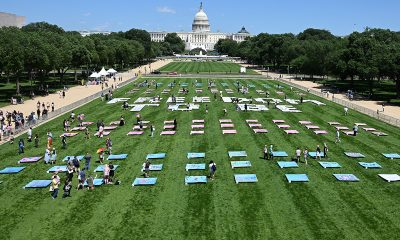U.S. Supreme Court
Supreme Court rules against affirmative action
The decision allows the U.S. Naval Academy and West Point to continue to use, at least for now, race-conscious admissions programs
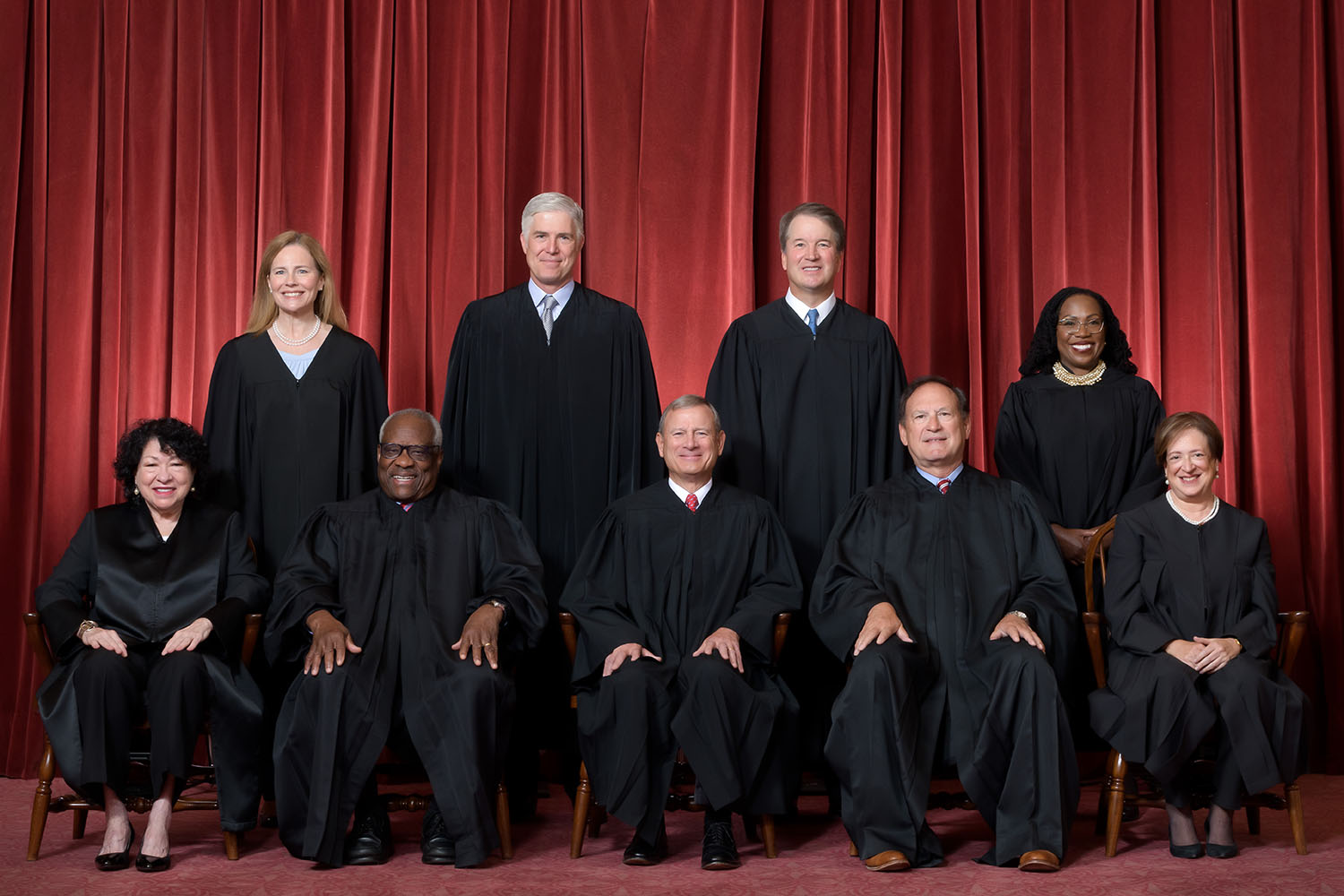
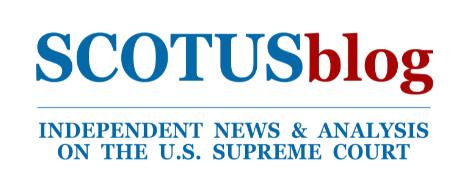
By Amy Howe | WASHINGTON – In a historic decision, the Supreme Court severely limited, if not effectively ended, the use of affirmative action in college admissions on Thursday.
By a vote of 6-3, the justices ruled that the admissions programs used by the University of North Carolina and Harvard College violate the Constitution’s equal protection clause, which bars racial discrimination by government entities.
Writing for the majority, Chief Justice John Roberts explained that college admissions programs can consider race merely to allow an applicant to explain how their race influenced their character in a way that would have a concrete effect on the university. But a student “must be treated based on his or her experiences as an individual — not on the basis of race,” Roberts wrote. The majority effectively, though not explicitly, overruled its 2003 decision in Grutter v. Bollinger, in which the court upheld the University of Michigan Law School’s consideration of race “as one factor among many, in an effort to assemble a student body that is diverse in ways broader than race.”
Justice Sonia Sotomayor dissented, in an opinion that was joined by Justices Elena Kagan and Ketanji Brown Jackson. Sotomayor emphasized that the majority’s decision had rolled “back decades of precedent and momentous progress” and “cement[ed] a superficial rule of colorblindness as a constitutional principle in an endemically segregated society.”
Thursday’s ruling was the latest in a series of challenges to the role of race in university admissions. In both the North Carolina and Harvard cases, the plaintiffs had asked the justices to overrule Grutter. In her opinion for the majority in that case, Justice Sandra Day O’Connor reaffirmed that “student body diversity is a compelling state interest that can justify the use of race in university admissions,” but she warned that race-conscious admissions policies should not last forever. In 25 years, she suggested, “the use of racial preferences will no longer be necessary to further the interest” in diversity.
Eleven years after the court’s decision in Grutter, a group called Students for Fair Admissions filed the North Carolina and Harvard cases in federal court. The group was founded by Edward Blum, a conservative activist who had also spearheaded a challenge to the admissions policy at the University of Texas at Austin as well as to Shelby County v. Holder, the 2013 case that narrowed the Voting Rights Act.
After the lower courts upheld both North Carolina’s and Harvard’s admissions policies, the Blum’s group came to the Supreme Court, where it asked the justices to overrule their decision in Grutter and bar the consideration of race in university admissions altogether. The court that agreed to take up both cases last year was a very different, and much more conservative, court than the one that had upheld the UT-Austin policy seven years before. Justice Anthony Kennedy, the author of the UT-Austin decision, retired in 2018 and was replaced by Justice Brett Kavanaugh, while Justice Ruth Bader Ginsburg was succeeded by Justice Amy Coney Barrett.
In a 40-page opinion that addressed both the Harvard and UNC cases, Roberts emphasized that the Supreme Court had only allowed universities to use race-based admissions programs “within the confines of narrow restrictions.” But the Harvard and UNC programs, “however well intentioned and implemented in good faith,” Roberts explained, do not comply with those restrictions.
Both programs, Roberts began, consider race as part of their admissions program for commendable goals, such as “training future leaders in the public and private sector” and “promoting the robust exchange of ideas.” But those goals are too vague for courts to measure, Roberts reasoned.
The programs also use race in a “negative” manner, Roberts next explained, despite the Supreme Court’s admonition that “an individual’s race may never be used against him in the admissions process.” Although both universities contend that an applicant’s race is never a negative factor, Roberts wrote, “[c]ollege admissions are zero-sum. A benefit provided to some applicants but not to others necessarily advantages the former group at the expense of the latter.” Moreover, Roberts added, the programs also rely on prohibited racial stereotyping – the idea that minority students will always have the same views or perspectives on a particular issue.
Finally, Roberts observed, the Harvard and UNC programs lacked the “logical end point” suggested by Grutter: Both Harvard and UNC acknowledged that their programs do not have a “sunset” date. Indeed, Roberts noted, “UNC suggests that it might soon use race to a greater extent than it currently does.”
Roberts stressed that the court’s decision did not bar universities from ever considering race on a case-by-case basis. Schools, he indicated, can consider “an applicant’s discussion of how race affected his or her life, be it through discrimination, inspiration, or otherwise.” But programs like the ones used by Harvard and UNC, he complained, have “concluded, wrongly, that the touchstone of an individual’s identity is not challenges bested, skills built, or lessons learned but the color of their skin. Our constitutional history does not tolerate that choice.”
The majority’s decision left the door open for service academies like the U.S. Naval Academy and West Point to continue to use, at least for now, race-conscious admissions programs. The Biden administration, which filed a brief as a “friend of the court” in support of Harvard and UNC, had emphasized that senior military leaders believe that it is important to have a diverse officer corps, which in turn requires the consideration of race for admission to the service academies. But the service academies did not participate in the Harvard and UNC cases and the lower courts did not consider that argument. Therefore, Roberts indicated in a footnote, the Supreme Court did not weigh in on the issue, “in light of the potentially distinct interests that military academies may present.”
Sotomayor’s 69-page dissent emphasized that the “limited use of race” by colleges and universities “has helped equalize educational opportunities for all students of every race and background and has improved racial diversity on college campuses.” “Although progress has been slow and imperfect,” she wrote, “race-conscious college admissions have advanced the Constitution’s guarantee of equality and have promoted” Brown v. Board of Education’s “vision of a Nation with more inclusive schools.” “The devastating impact of” Thursday’s decision, she concluded, “cannot be overstated.”
Justice Elena Kagan joined Sotomayor’s dissent. Justice Ketanji Brown Jackson, who until last year served on Harvard’s board of overseers, recused herself from the Harvard case and therefore joined Sotomayor’s dissent as it applied to the UNC case. Jackson also filed a dissent in the UNC case, joined by Sotomayor and Kagan, in which she argued that American society “has never been colorblind.” “Given the lengthy history of state-sponsored race-based preferences in America,” Jackson wrote, “to say that anyone is now victimized if a college considered whether that legacy of discrimination has unequally advantaged its applicants fails to acknowledge the well-documented ‘intergenerational transmission of inequality’ that still plagues our citizenry.”
Editor’s Note: In an emailed statement, Imani Rupert-Gordon, the executive director of The National Center for Lesbian Rights (NCLR) said:
“We are deeply disappointed that the Supreme Court has once again upended decades of precedent in a decision that will deepen racial inequality in education and cause lasting harm not only to many students of color but to everyone in this country. The majority of Americans support affirmative action because it helps to level an uneven playing field caused by generations of racism and white supremacy. Today’s ruling continues to show just how out of step this Court is with our shared values. We know that when everyone has access to quality higher education, we are all better for it, and today’s ruling is a step in the wrong direction. We will continue to fight against those that seek to bring us back to a time of segregationist educational practice and policy and will not stop until all students – regardless of their race – are able to access the highest quality education in this country. NCLR is committed to working for racial equity in education for all of our communities.”
Shannon Minter, the Legal Director for NCLR in an email to the Blade after the ruling said:
“First as a lawyer in the Reagan and Bush administrations and later as a judge on the DC Circuit and now as a Supreme Court justice, Chief Justice John Roberts has sought to undermine affirmative efforts to remedy the lasting impact of slavery on Black people in our country and our nation’s long history of severe and systemic racial discrimination.
After gutting the Voting Right Act in Shelby County v. Holder, he has now succeeded in getting a majority of justices to support another of his major goals: banning college admission policies that take race into account as a factor, notwithstanding the critical importance of education as a pipeline to full participation in our society.
As the dissenting justices noted, the impact of this decision will be to worsen racial inequality in colleges and universities, which in turn will have a negative impact on all sectors of our society.
This dangerous decision could hardly come at a worse moment, when so many of our democratic norms and institutions are under attack. The only silver lining here is that this opinion is so far out of step with the values of most people in this country that its impact may be diminished by a renewed demand for greater racial inclusivity in higher education, which still may be achieved by many other means not addressed in today’s decision.
It is incumbent on all of us who care about maintaining a multi-racial democracy to do all we can to minimize the harm caused by this tragically misguided opinion.”
The White House released a statement by Vice President Harris on the Supreme Court’s ruling:
“Today’s Supreme Court decision in Students for Fair Admissions v. Harvard and Students for Fair Admissions v. University of North Carolina is a step backward for our nation. It rolls back long-established precedent and will make it more difficult for students from underrepresented backgrounds to have access to opportunities that will help them fulfill their full potential.
It is well established that all students benefit when classrooms and campuses reflect the incredible diversity of our Nation. Colleges and universities provide opportunities for students to interact with Americans from all walks of life and learn from one another. By making our schools less diverse, this ruling will harm the educational experience for all students.
Our Nation’s colleges and universities educate and train the next generation of American leaders. Students who sit in classrooms today will be the leaders of our government, military, private sector, and academic institutions tomorrow. Today’s decision will impact our country for decades to come.
In the wake of this decision, we must work with ever more urgency to make sure that all of our young people have an opportunity to thrive.”
****************************************************************************************
The preceding article was published by SCOTUSBlog and is republished with permission.
Read the ruling here:
U.S. Supreme Court
Supreme Court rejects Kim Davis’s effort to overturn landmark marriage ruling
Justices declined to revisit the Obergefell decision
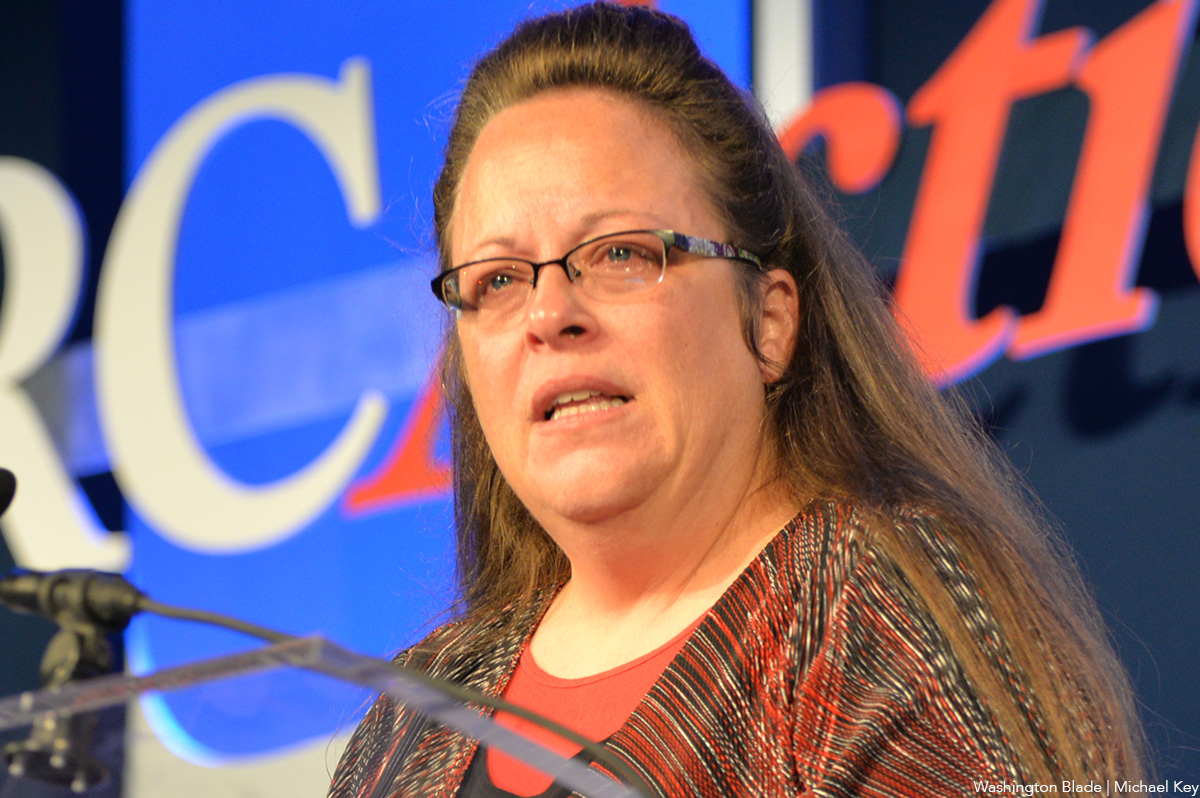
The U.S. Supreme Court has declined to hear an appeal from Kim Davis, the former Rowan County, Ky., clerk best known for refusing to issue marriage licenses to same-sex couples after the landmark 2015 Obergefell v. Hodges decision legalized same-sex marriage nationwide.
Following the Obergefell ruling, Davis stopped issuing marriage licenses altogether and has since filed multiple appeals seeking to challenge same-sex marriage protections. The court once again rejected her efforts on Monday.
In this latest appeal, Davis sought to overturn a $100,000 monetary award she was ordered to pay to David Moore and David Ermold, a same-sex couple to whom she denied a marriage license. Her petition also urged the court to use the case as a vehicle to revisit the constitutional right to same-sex marriage.
The petition, along with the couple’s brief in opposition, was submitted to the Supreme Court on Oct. 22 and considered during the justices’ private conference on Nov. 7. Davis needed at least four votes for the court to take up her case, but Monday’s order shows she fell short.
Cathy Renna, the director of communications for the National LGBTQ Task Force, a non-profit organization that works towards supporting the LGBQ community through grassroots organizing told the Washington Blade:
“Today’s decision is not surprising given the longshot status of Davis’s claim, but it’s a relief that the Supreme Court will not hear it, given the current make up of the court itself. We hope that this settles the matter and marriage equality remains the law of the land for same-sex couples.”
Human Rights Campaign President Kelley Robinson released the following statement:
“Today, love won again. When public officials take an oath to serve their communities, that promise extends to everyone — including LGBTQ+ people. The Supreme Court made clear today that refusing to respect the constitutional rights of others does not come without consequences.
Thanks to the hard work of HRC and so many, marriage equality remains the law of the land through Obergefell v. Hodges and the Respect for Marriage Act. Even so, we must remain vigilant.
It’s no secret that there are many in power right now working to undermine our freedoms — including marriage equality — and attack the dignity of our community any chance they get. Last week, voters rejected the politics of fear, division, and hate, and chose leaders who believe in fairness, freedom, and the future. In race after race, the American people rejected anti-transgender attacks and made history electing pro-equality candidates up and down the ballot.
And from California to Virginia to New Jersey to New York City, LGBTQ+ voters and Equality Voters made the winning difference. We will never relent and will not stop fighting until all of us are free.”
The Log Cabin Republicans, a organization dedicated to conservative LGBTQ people, praising the Court’s decision.
“After months of hand-wringing and fear-mongering by Gay Inc., Democrats, and the media, the conservative majority on the Supreme Court sided with the American people and common sense and declined to revisit marriage equality,” Interim Executive Director Ed Williams said in a statement. “Just like Justice Amy Coney Barrett hinted at earlier this year, Obergefell is settled. Marriage equality has been, and will continue to be, the law of the land.”
This story is developing and will be updated as more information becomes available.
U.S. Supreme Court
LGBTQ legal leaders to Supreme Court: ‘honor your precedent, protect our families’
Experts insist Kim Davis case lacks merit
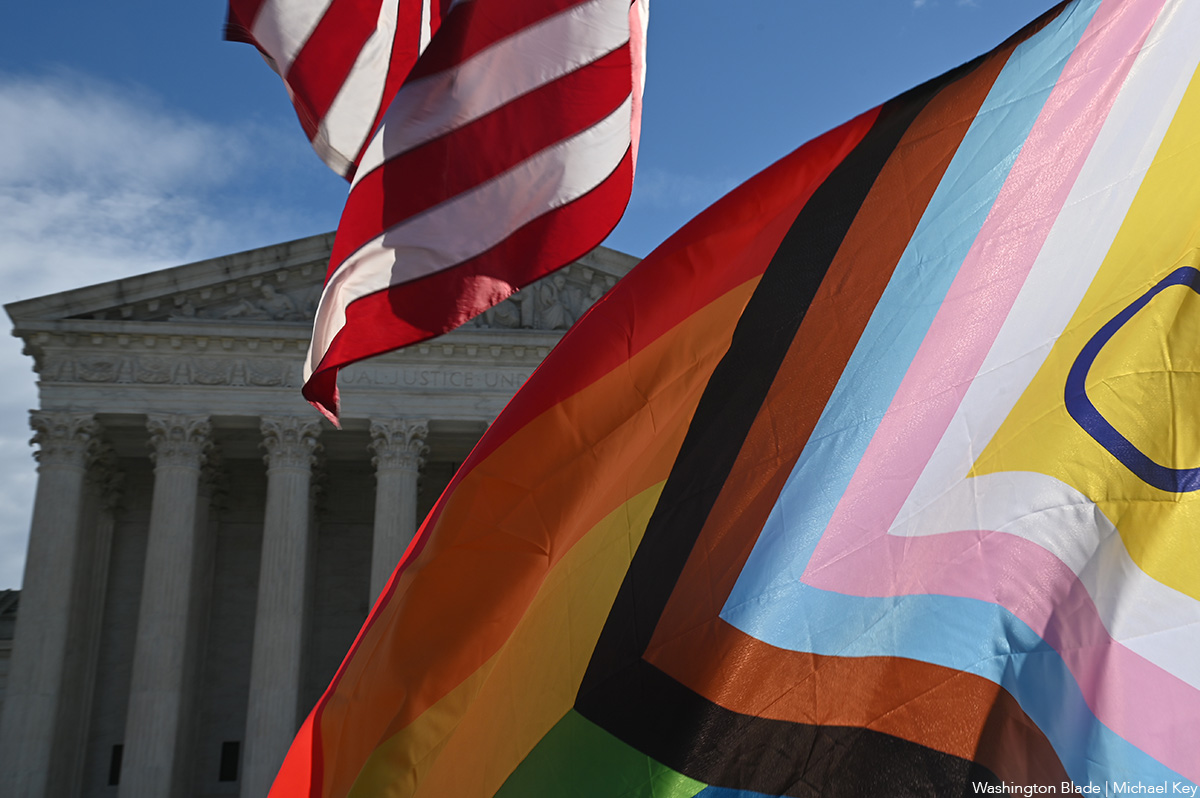
The U.S. Supreme Court considered hearing a case from Kim Davis on Friday that could change the legality of same-sex marriage in the United States.
Davis, best known as the former county clerk for Rowan County, Ky., who defied federal court orders by refusing to issue marriage licenses to same-sex couples — and later, to any couples at all — is back in the headlines this week as she once again attempts to get Obergefell v. Hodges overturned on a federal level.
She has tried to get the Supreme Court to overturn this case before — the first time was just weeks after the initial 2015 ruling — arguing that, in her official capacity as a county clerk, she should have the right to refuse same-sex marriage licenses based on her First Amendment rights. The court has emphatically said Davis, at least in her official capacity as a county clerk, does not have the right to act on behalf of the state while simultaneously following her personal religious beliefs.
The Washington Blade spoke with Karen Loewy, interim deputy legal director for litigation at Lambda Legal, the oldest and largest national legal organization advancing civil rights for the LGBTQ community and people living with HIV through litigation, education, and public policy, to discuss the realistic possibilities of the court taking this case, its potential implications, and what LGBTQ couples concerned about this can do now to protect themselves.
Loewy began by explaining how the court got to where it is today.
“So Kim Davis has petitioned the Supreme Court for review of essentially what was [a] damages award that the lower court had given to a couple that she refused a marriage license to in her capacity as a clerk on behalf of the state,” Loewy said, explaining Davis has tried (and failed) to get this same appeal going in the past. “This is not the first time that she has asked the court to weigh in on this case. This is her second bite at the apple at the U.S. Supreme Court, and in 2020, the last time that she did this, the court denied review.”
Davis’s entire argument rests on her belief that she has the ability to act both as a representative of the state and according to her personal religious convictions — something, Loewy said, no court has ever recognized as a legal right.
“She’s really claiming a religious, personal, religious exemption from her duties on behalf of the state, and that’s not a thing.”
That, Loewy explained, is ultimately a good thing for the sanctity of same-sex marriage.
“I think there’s a good reason to think that they will, yet again, say this is not an appropriate vehicle for the question and deny review.”
She also noted that public opinion on same-sex marriage remains overwhelmingly positive.
“The Respect for Marriage Act is a really important thing that has happened since Obergefell. This is a federal statute that mandates that marriages that were lawfully entered, wherever they were lawfully entered, get respect at the federal level and across state lines.”
“Public opinion around marriage has changed so dramatically … even at the state level, you’re not going to see the same immediate efforts to undermine marriages of same-sex couples that we might have a decade ago before Obergefell came down.”
A clear majority of U.S. adults — 65.8 percent — continue to support keeping the Obergefell v. Hodges decision in place, protecting the right to same-sex marriage. That support breaks down to 83 percent of liberals, 68 percent of moderates, and about half of conservatives saying they support marriage equality. These results align with other recent polling, including Gallup’s May 2025 estimate showing 68 percent support for same-sex marriage.
“Where we are now is quite different from where we were in terms of public opinion … opponents of marriage equality are loud, but they’re not numerous.”
Loewy also emphasized that even if, by some chance, something did happen to the right to marry, once a marriage is issued, it cannot be taken back.
“First, the Respect for Marriage Act is an important reason why people don’t need to panic,” she said. “Once you are married, you are married, there isn’t a way to sort of undo marriages that were lawfully licensed at the time.”
She continued, explaining that LGBTQ people might feel vulnerable right now as the current political climate becomes less welcoming, but there is hope — and the best way to respond is to move thoughtfully.
“I don’t have a crystal ball. I also can’t give any sort of specific advice. But what I would say is, you know, I understand people’s fear. Everything feels really vulnerable right now, and this administration’s attacks on the LGBTQ community make everybody feel vulnerable for really fair and real reasons. I think the practical likelihood of Obergefell being reversed at this moment in time is very low. You know, that doesn’t mean there aren’t other, you know, case vehicles out there to challenge the validity of Obergefell, but they’re not on the Supreme Court’s doorstep, and we will see how it all plays out for folks who feel particularly concerned and vulnerable.”
Loewy went on to say there are steps LGBTQ couples and families can take to safeguard their relationships, regardless of what the court decides. She recommended getting married (if that feels right for them) and utilizing available legal tools such as estate planning and relationship documentation.
“There are things, steps that they can take to protect their families — putting documentation in place and securing relationships between parents and children, doing estate planning, making sure that their relationship is recognized fully throughout their lives and their communities. Much of that is not different from the tools that folks have had at their disposal prior to the availability of marriage equality … But I think it behooves everyone to make sure they have an estate plan and they’ve taken those steps to secure their family relationships.”
“I think, to the extent that the panic is rising for folks, those are tools that they have at their disposal to try and make sure that their family and their relationships are as secure as possible,” she added.
When asked what people can do at the state and local level to protect these rights from being eroded, Loewy urged voters to support candidates and initiatives that codify same-sex marriage at smaller levels — which would make it more difficult, if not impossible, for a federal reversal of Obergefell to take effect.
“With regard to marriage equality … states can be doing … amend state constitutions, to remove any of the previous language that had been used to bar same-sex couples from marrying.”
Lambda Legal CEO Kevin Jennings echoed Loewy’s points in a statement regarding the possibility of Obergefell being overturned:
“In the United States, we can proudly say that marriage equality is the law,” he said via email. “As the Supreme Court discusses whether to take up for review a challenge to marriage equality, Lambda Legal urges the court to honor what millions of Americans already know as a fundamental truth and right: LGBTQ+ families are part of the nation’s fabric.
“LGBTQ+ families, including same-sex couples, are living in and contributing to every community in this country: building loving homes and small businesses, raising children, caring for pets and neighbors, and volunteering in their communities. The court took note of this reality in Obergefell v. Hodges, citing the ‘hundreds of thousands of children’ already being raised in ‘loving and nurturing homes’ led by same-sex couples. The vows that LGBTQ+ couples have taken in their weddings might have been a personal promise to each other. Still, the decision of the Supreme Court is an unbreakable promise affirming the simple truth that our Constitution guarantees equal treatment under the law to all, not just some.”
He noted the same things Loewy pointed out — namely that, at minimum, the particular avenue Davis is attempting to use to challenge same-sex marriage has no legal footing.
“Let’s be clear: There is no case here. Granting review in this case would unnecessarily open the door to harming families and undermine our rights. Lower courts have found that a government employee violates the law when she refuses to grant marriage licenses to same-sex couples as her job requires. There is no justifiable reason for the court to revisit settled law or destabilize families.”
He also addressed members of the LGBTQ community who might be feeling fearful at this moment:
“To our community, we say: this fight is not new. Our community has been fighting for decades for our right to love whom we love, to marry and to build our families. It was not quick, not easy, not linear. We have lived through scary and dark times before, endured many defeats, but we have persevered. When we persist, we prevail.”
And he issued a direct message to the court, urging justices to honor the Constitution over one person’s religious beliefs.
“To the court, we ask it to honor its own precedent, to honor the Constitution’s commands of individual liberty and equal protection under the law, and above all, to honor the reality of LGBTQ families — deeply rooted in every town and city in America. There is no reason to grant review in this case.”
Kenneth Gordon, a partner at Brinkley Morgan, a family law firm that works with individuals and couples, including same-sex partners, to meet their legal and financial goals, also emphasized the importance of not panicking and of using available documentation processes such as estate planning.
“From a purely legal standpoint, overturning Obergefell v. Hodges would present significant complications. While it is unlikely that existing same-sex marriages would be invalidated, particularly given the protections of the 2022 Respect for Marriage Act, states could regain the authority to limit or prohibit future marriage licenses to same-sex couples. That would create a patchwork of laws across the country, where a couple could be legally married in one state but not recognized as married if they moved to or even visited another state.
“The legal ripple effects could be substantial. Family law issues such as adoption, parental rights, inheritance, health care decision-making, and property division all rely on the legal status of marriage. Without uniform recognition, couples could face uncertainty in areas like custody determinations, enforcement of spousal rights in medical emergencies, or the ability to inherit from a spouse without additional legal steps.
“Courts generally strive for consistency, and creating divergent state rules on marriage recognition would reintroduce conflicts that Obergefell was intended to resolve. From a legal systems perspective, that inconsistency would invite years of litigation and impose significant personal and financial burdens on affected families.”
Finally, Human Rights Campaign President Kelley Robinson issued a statement about the possibility of the Supreme Court deciding to hear Davis’s appeal:
“Marriage equality isn’t just the law of the land — it’s woven into the fabric of American life,” said Robinson. “For more than a decade, millions of LGBTQ+ couples have gotten married, built families, and contributed to their communities. The American people overwhelmingly support that freedom. But Kim Davis and the anti-LGBTQ+ extremists backing her see a cynical opportunity to attack our families and re-litigate what’s already settled. The court should reject this paper-thin attempt to undermine marriage equality and the dignity of LGBTQ+ people.”
U.S. Supreme Court
Supreme Court rules White House can implement anti-trans passport policy
ACLU, Lambda Legal filed lawsuits against directive.
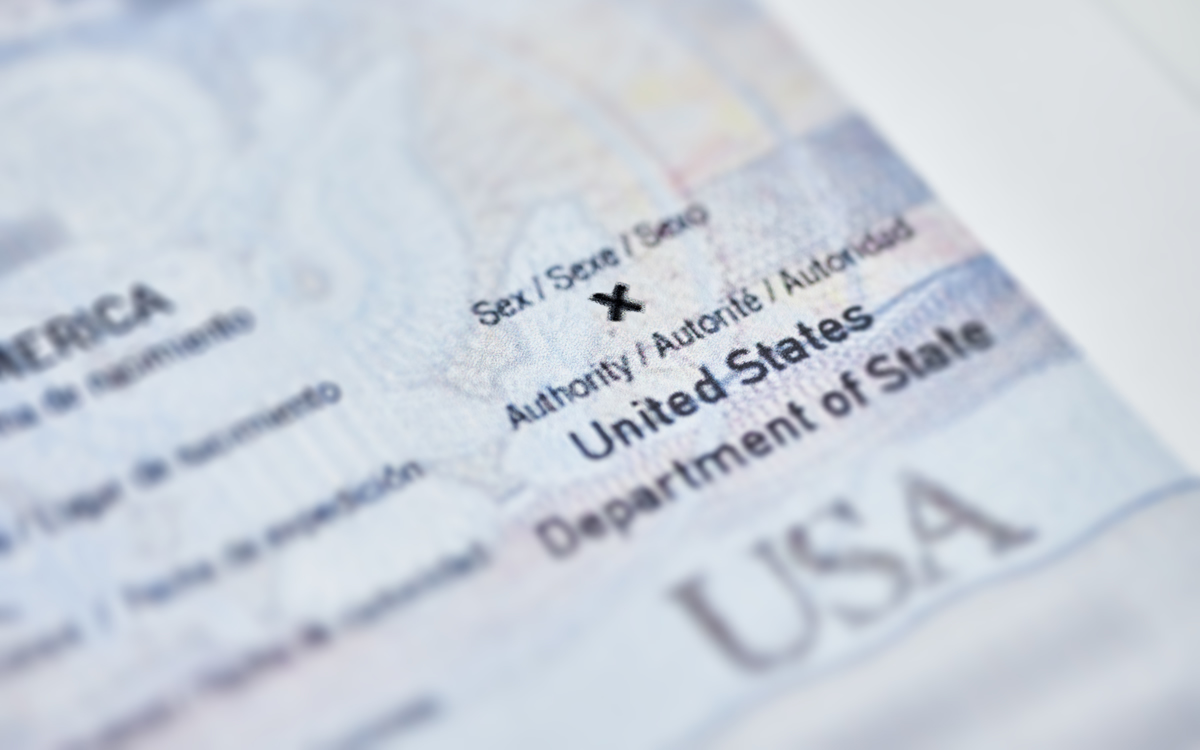
The U.S. Supreme Court on Thursday said the Trump-Vance administration can implement a policy that bans the State Department from issuing passports with “X” gender markers.
President Donald Trump once he took office signed an executive order that outlined the policy. A memo the Washington Blade obtained directed State Department personnel to “suspend any application where the applicant is seeking to change their sex marker from that defined in the executive order pending further guidance.”
The White House only recognizes two genders: male and female.
The American Civil Liberties Union in February filed a lawsuit against the passport directive on behalf of seven trans and nonbinary people.
A federal judge in Boston in April issued a preliminary junction against it. A three-judge panel on the 1st U.S. Circuit Court of Appeals in September ruled against the Trump-Vance administration’s motion to delay the move.
A federal judge in Maryland also ruled against the passport policy. (Lambda Legal filed the lawsuit on behalf of seven trans people.)
“This is a heartbreaking setback for the freedom of all people to be themselves, and fuel on the fire the Trump administration is stoking against transgender people and their constitutional rights,” said Jon Davidson, senior counsel for the ACLU’s LGBTQ and HIV Project, in a statement. “Forcing transgender people to carry passports that out them against their will increases the risk that they will face harassment and violence and adds to the considerable barriers they already face in securing freedom, safety, and acceptance. We will continue to fight this policy and work for a future where no one is denied self-determination over their identity.”
Justices Ketanji Brown Jackson, Elena Kagan, and Sonia Sotomayor dissented.
The Supreme Court ruling is here.





